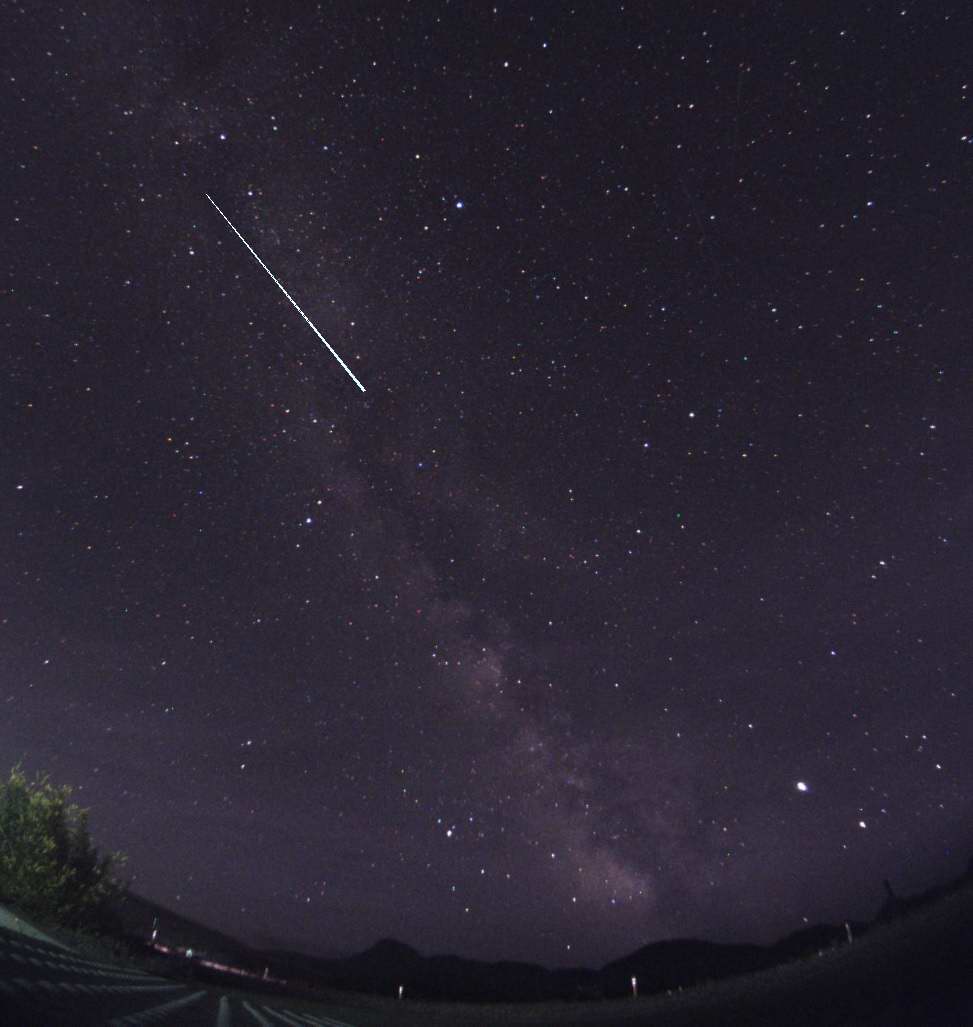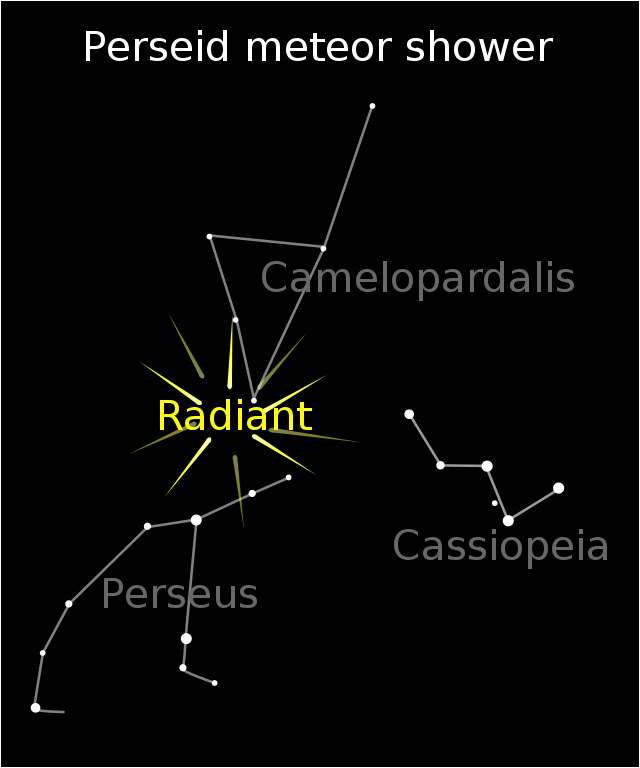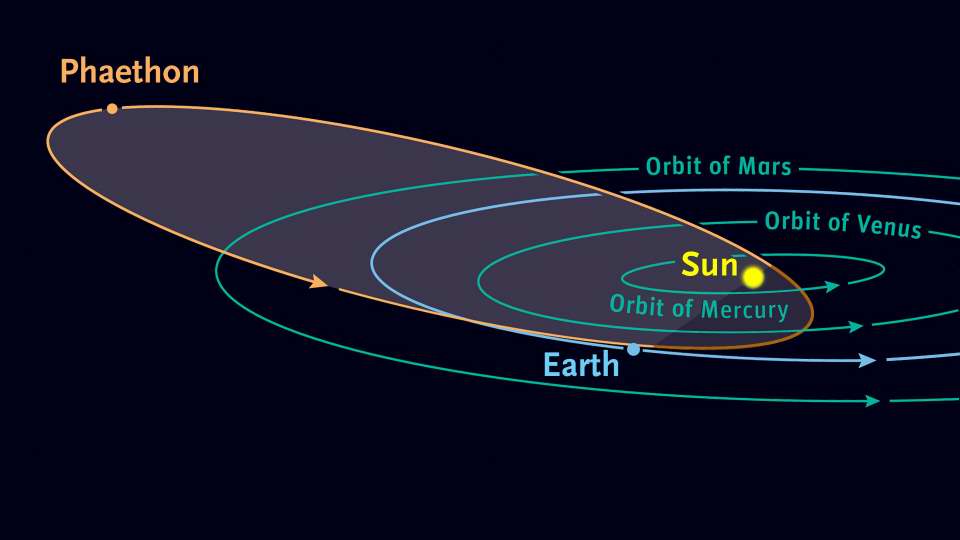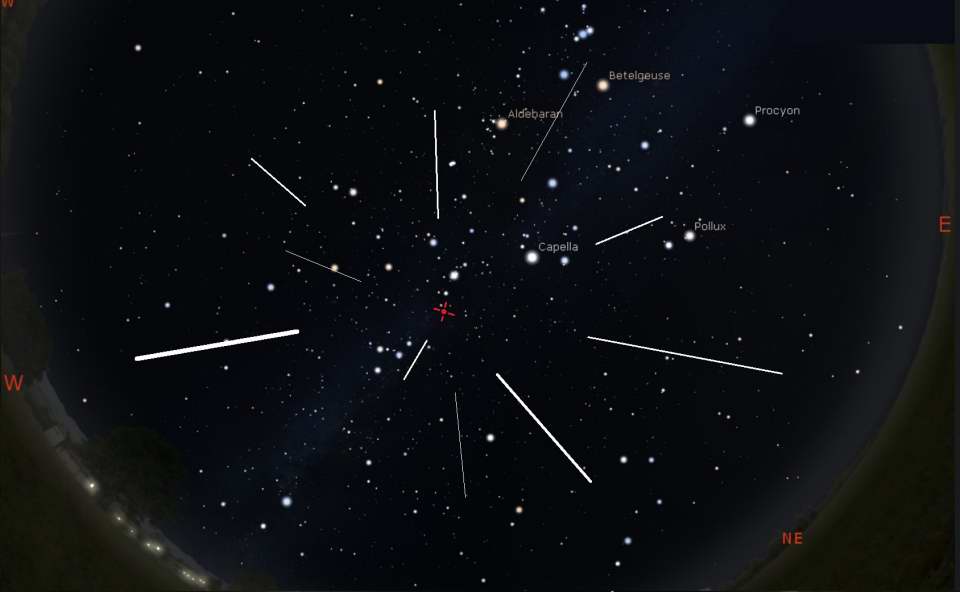Beginner's Guide
Meteors
If you stare up into the sky sooner or later you're going to spot a meteor. They are sometimes called falling stars or shooting stars which nicely describes their appearance, but not what they are which is debris from outer space entering our atmosphere. Most of these are no larger than a grain of sand, although the brighter ones are as large as a pebble.
A meteor can appear suddenly in any part of the sky. Their brightness varies depending on the size of the particle and the speed will depend on the angle of entry. The speed can approach 44 miles per second and friction with the air heats them until they become incandescent and vaporize long before they can reach the ground. Most meteors appear from 50 to 75 miles up. The trail of the meteor can be just a fraction of a degree to well over 20 degrees.
Meteor Terms
Meteor is the visible streak of light you see.
Meteorid is the actual debris.
Meteorite is a meteoroid that makes it to ground.
Fireball is an especially bright meteor. The usual threshold for the brightness of the meteor is the planet Venus which shines around magnitude -4.0.
Bolide is a very bright fireball which breaks up or explodes in a bright flash (or flashes), generally fragmented. It can also be a fireball that is magnitude -14 or brighter, which is more luminous than the full moon. These are simply spectacular!
Meteor Trail is the trail of ionized dust and gas that remains along the path of a meteor. These are usually seen with bright meteors, but with binoculars they can be detected with dimmer ones as well. Binoculars will also extend the time when the trail is visible.
Meteor Shower is when the Earth's orbit intersects a meteor stream. The meteors in a shower will appear to emanate from a point in the sky known as the radiant. Meteor showers are named after the constellation where the radiant is located.
Meteor Storm is an very intense meteor shower with a rate which exceeds 1000 meteors per hour. These occur when the Earth encounters a dense group of meteoroids. Sadly, these are very rare events. The most famous meteor storm are the Leonids which though it is an annual meteor shower, every 33 years the Earth passes through the dense area of the stream.
Sporadic Meteor are the normal meteors you see night after night and are not a part of a meteor shower.
Meteor Showers
Undoubtedly you've heard of Meteor Showers because these often make the news. In particular, in August the Perseid meteor shower occurs and is popular because it's usually one of the best of the year and it occurs when the weather is comfortable for viewing. But it is not usually the best meteor shower. That award goes to the Geminids which peak in the middle of December, but the invariably cold weather means they little attention.
We can't stress enough that "shower" is a horrible misnomer. An incredibly good number of meteors to see is 100 in a single hour and that really only happens with the Perseids. Generally meteor watching requires patience.
Meteor showers happen when the orbit of Earth goes through a particularly rich debris field. Almost all meteor showers originate from a passing comet. The Geminids are an exception in that they are the result of an asteroid: Phaethon. The result is that the meteors you see seem to emanate from a point in the sky which we call the radiant.
As you can note from the above diagram, the meteors do not start from the radiant point. But they travel away from it and if you draw imaginary lines backward all the meteor trails point to the radiant. The brightness of the meteors will vary considerably. So if you're observing from a dark location (no moon, lack of artificial light) you'll see more meteors
Yearly Meteor Showers
This table below shows the most significant meteor showers that happen every year. With a few exceptions, these showers are named for the constellation of the radiant point.
|
Dates |
Maximum Date(s) |
Shower Name |
| Jan 1-5 | Jan 3-4 | Quadrantids |
| Jan 15 - Feb 8 | Jan 27-28 | Alpha Aurigids |
| Apr 19-24 | Apr 22 | April Lyrids |
| May 1-12 | May 5 | Eta Aquarids |
| Jun 10-21 | Jun 15 | June Lyrids |
| Jul 15 - Aug 15 | Jul 28 | Delta Aquarids |
| Aug 1-18 | Aug 12 | Perseids |
| Oct 17-26 | Oct 20 | Orionids |
| Nov 14-20 | Nov 17 | Leonids |
| Dec 4-16 | Dec 13-14 | Geminids |
How to observe a meteor shower
- Shower is a terrible misnomer: Never expect a "shower."
The peak of most of the best showers is maybe 50 per hour with 100 per hour
the best. So with maybe 1-2 meteors per minute it's no more than a drizzle.
- Instrumentation: The great news about a meteor
shower is that it requires nothing more than just your eyes. Meteors
appear so suddenly and move so fast that even seeing them in binoculars
is out of the question. You simply need to just look up into the sky with just your
eyes. Consequently, we suggest lying on your back on a comfortable lounge chair. However,
we do recommend you have binoculars handy to help see any trail better and longer.
- Location: What you need is a relatively dark
location (i.e., try to get as far out of the city as practical) because
the darker the skies, the more meteors you'll see. Also, a site with
relatively good horizons helps because the meteors can appear in any
part of the sky.
- When to observe: The table gives the dates
when you are more likely to see meteors and the best nights are those
marked as the peak. But during those dates, the best time is generally
after midnight.
- Avoid the Moon: Along the lines of a
dark sky, the presence of the moon will always be a hindrance. So pick a
time when the moon is not out. Unfortunately, if the meteor shower
occurs near the full moon, there's nothing you can do but wait for
another shower.
- Dress Warm: The best advice we can offer is to dress warm. Nothing can spoil the fun like getting cold. Unfortunately, the Geminids which is usually the best meteor shower of the year occurs in the middle of December so few people really go out for that one.
For more information, we suggest reading EarthSky's Top-10 Tips For Meteor Watchers.
Meteor Radiants - Current Activity




